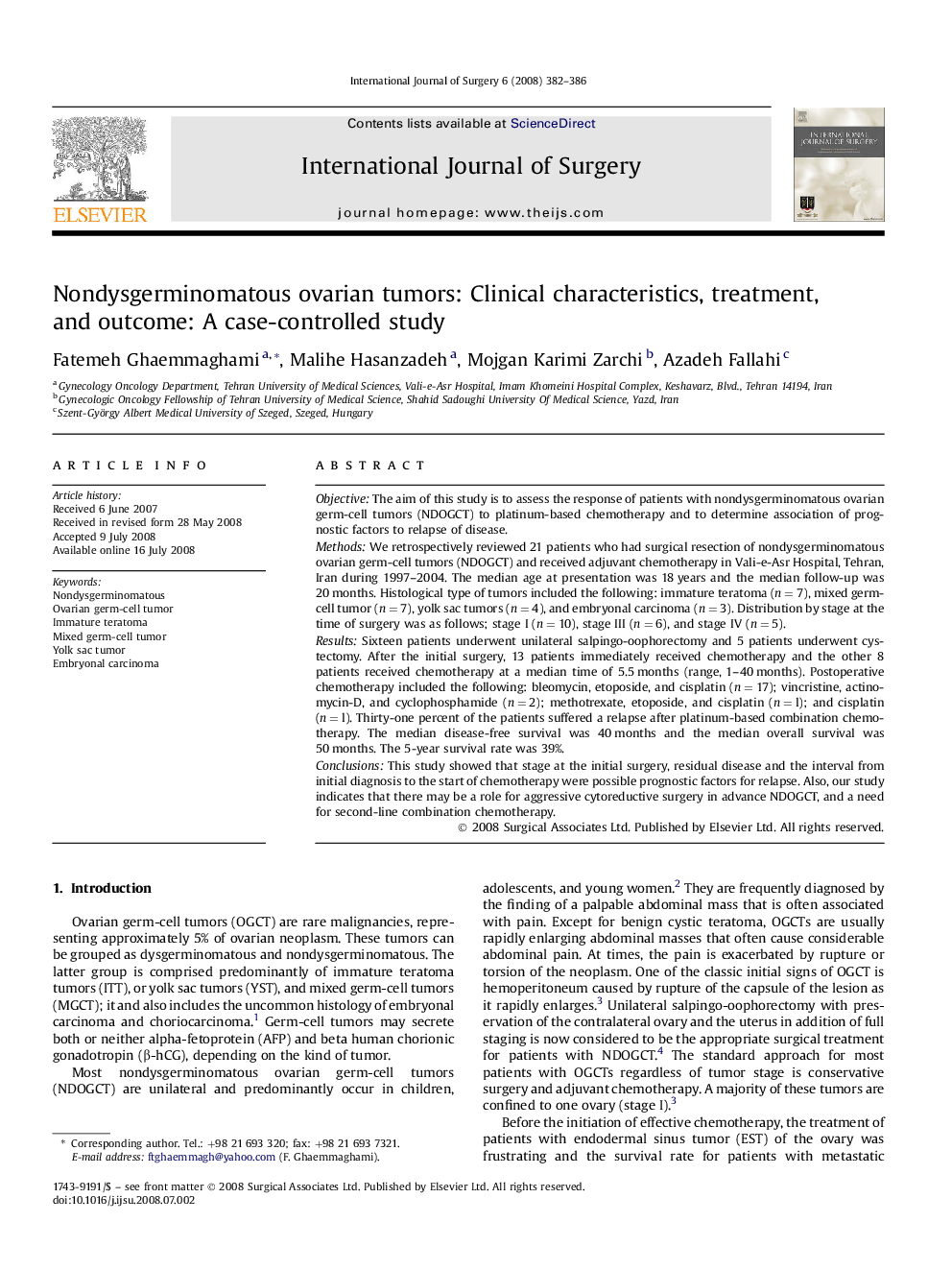| کد مقاله | کد نشریه | سال انتشار | مقاله انگلیسی | نسخه تمام متن |
|---|---|---|---|---|
| 4288065 | 1612043 | 2008 | 5 صفحه PDF | دانلود رایگان |

ObjectiveThe aim of this study is to assess the response of patients with nondysgerminomatous ovarian germ-cell tumors (NDOGCT) to platinum-based chemotherapy and to determine association of prognostic factors to relapse of disease.MethodsWe retrospectively reviewed 21 patients who had surgical resection of nondysgerminomatous ovarian germ-cell tumors (NDOGCT) and received adjuvant chemotherapy in Vali-e-Asr Hospital, Tehran, Iran during 1997–2004. The median age at presentation was 18 years and the median follow-up was 20 months. Histological type of tumors included the following: immature teratoma (n = 7), mixed germ-cell tumor (n = 7), yolk sac tumors (n = 4), and embryonal carcinoma (n = 3). Distribution by stage at the time of surgery was as follows; stage I (n = 10), stage III (n = 6), and stage IV (n = 5).ResultsSixteen patients underwent unilateral salpingo-oophorectomy and 5 patients underwent cystectomy. After the initial surgery, 13 patients immediately received chemotherapy and the other 8 patients received chemotherapy at a median time of 5.5 months (range, 1–40 months). Postoperative chemotherapy included the following: bleomycin, etoposide, and cisplatin (n = 17); vincristine, actinomycin-D, and cyclophosphamide (n = 2); methotrexate, etoposide, and cisplatin (n = l); and cisplatin (n = l). Thirty-one percent of the patients suffered a relapse after platinum-based combination chemotherapy. The median disease-free survival was 40 months and the median overall survival was 50 months. The 5-year survival rate was 39%.ConclusionsThis study showed that stage at the initial surgery, residual disease and the interval from initial diagnosis to the start of chemotherapy were possible prognostic factors for relapse. Also, our study indicates that there may be a role for aggressive cytoreductive surgery in advance NDOGCT, and a need for second-line combination chemotherapy.
Journal: International Journal of Surgery - Volume 6, Issue 5, October 2008, Pages 382–386